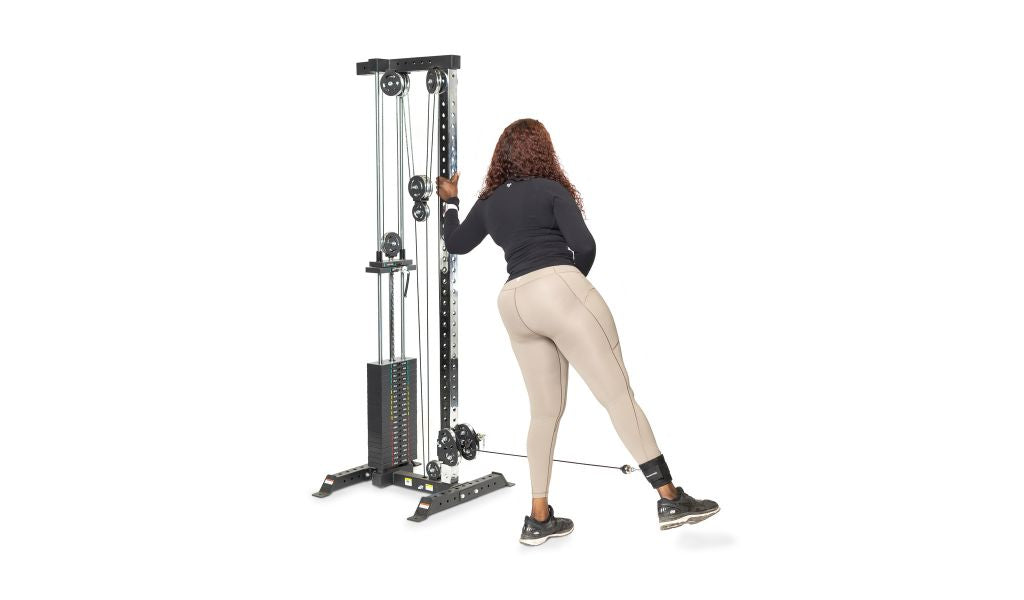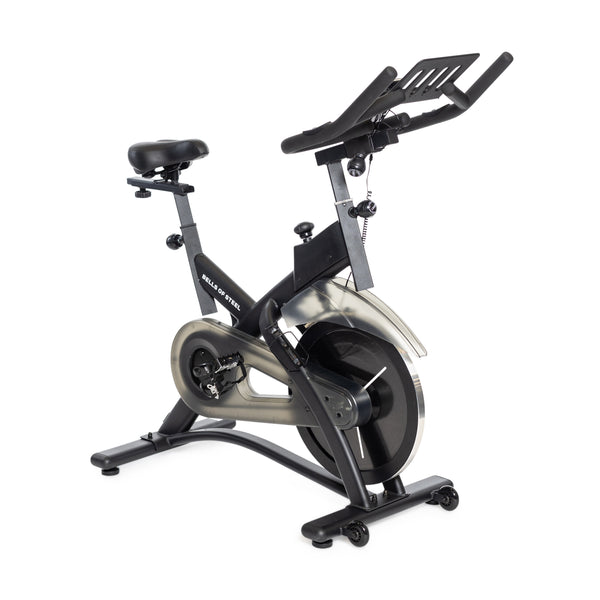Not everyone has a garage to turn into a swole sanctuary, and that’s totally fine. You don’t need a three-car setup to crush your fitness goals. With smart planning, compact gear, and a bit of creativity, you can build a home gym in an apartment, basement, spare room, or even your backyard shed. Here’s how to make it happen.
Why You Don’t Need a Garage to Build a Home Gym
The idea that you need a garage for a proper home gym is outdated. Today’s equipment is modular, space-efficient, and versatile, meaning you can train like an athlete even in a one-bedroom apartment. Whether you’re tight on space or just prefer keeping your setup inside, there’s a way to make it work without sacrificing function or gains.
Best Spaces for a Home Gym (Without a Garage)
1. Spare Room or Office
Convert your guest room or home office into a dual-purpose gym. Add space-savvy gear like the Bells of Steel All-in-One Trainer, which combines a cable machine and squat stand into one corner-friendly setup.
Pros: Temperature-controlled, easy access, easy to clean.
Cons: Limited ceiling height and flooring protection needed.
2. Basement Gym Setup
Basements are excellent for noise control and privacy. You can go heavy here without waking the neighbors. Make sure to install proper flooring, like crash pads, and use plate-loaded machines for versatility.
Pros: Soundproofing, more room for racks.
Cons: Low ceilings and moisture (use a dehumidifier.)
3. Backyard Shed Gym
If you’ve got a shed, you’ve got a gym. Insulate it, add rubber flooring, and you’ll have a private iron paradise.
Pros: Separate from the house, great ventilation.
Cons: Temperature control can be tricky; you’ll need heating or fans.
4. Apartment-Friendly Gym Setup
Apartment living doesn’t mean giving up on strength training. Opt for portable, quiet equipment, adjustable dumbbells, resistance bands, and compact racks like the Squat Stand.
Pro tip: Look for low-impact tools like the Blitz Indoor Cycling Bike for cardio with minimal noise and space.
Smart Equipment Choices for Small Spaces
Compact Racks and Trainers
Skip the massive rigs and choose folding or space-saving racks. A folding power rack or a wall-mounted pull-up bar lets you reclaim floor space when not in use.
Dumbbells and Adjustable Benches
A set of adjustable dumbbells and a compact adjustable bench let you hit every muscle group with minimal clutter.
Resistance Bands and Cables
Bands are perfect for isolation work and travel, while compact cable systems like the Plate-Loaded Cable Tower give you a commercial feel in a small footprint.
Floor Protection
Rubber mats or foam tiles protect your floors and reduce noise. Even a small gym benefits from durable flooring—plus, it makes deadlifts and rows much more joint-friendly.
Tips for Building a Home Gym Without a Garage
1. Measure Everything
Space planning is key. Know your ceiling height, doorway width, and available square footage before ordering equipment.
2. Think Vertical
Use walls and ceilings for storage. Mount barbells, plates, and bands on hooks or racks to keep the floor clear.
3. Prioritize Versatility
Go for multipurpose gear—think racks with attachment compatibility, combo benches, and loadable dumbbells.
4. Control Noise
Use bumper plates, crash pads, and floor protection if you share walls with neighbors. Training quietly keeps everyone happy.
5. Keep It Comfortable
Lighting, airflow, and temperature all affect motivation. A fan, space heater, or smart lighting can turn a cramped space into your personal performance zone.
Who Should Build a Home Gym Without a Garage?
-
Apartment dwellers: Small-space setups with minimal noise.
-
Homeowners without extra space: Transform a basement or spare room.
-
Minimalists: Those who value efficiency and clean design.
-
Hybrid lifters: Athletes who mix strength training and cardio.
FAQ: Building a Home Gym Without a Garage
Can I build a home gym in an apartment?
Yes. Focus on compact and quiet equipment like adjustable dumbbells, resistance bands, and foldable racks.
What’s the best flooring for a home gym in a room?
Rubber flooring or deadlift mats protect both floors and equipment while reducing vibration and noise.
How much space do I need for a home gym?
A 6x8 ft area is enough for a rack, bench, and some accessories. You can build a great setup in a surprisingly small footprint.
Can I do heavy lifts without a garage?
Absolutely. As long as your flooring is protected and your equipment is secure, you can safely squat, deadlift, and bench in other rooms.
What’s the quietest cardio for small spaces?
The Blitz Rower is an excellent non-motorized option: no hum, no motor noise, just pure work.
Final Thoughts
While we love our members of the garage gym community, it’s not an option for everyone (we see you, city dwellers!). Fortunately, there are plenty of options for creating your own personal lifting paradise without lots of room to roam. Check out the latest and greatest at Bells of Steel for space-savvy, multifunctional gear that suits your space and budget.




